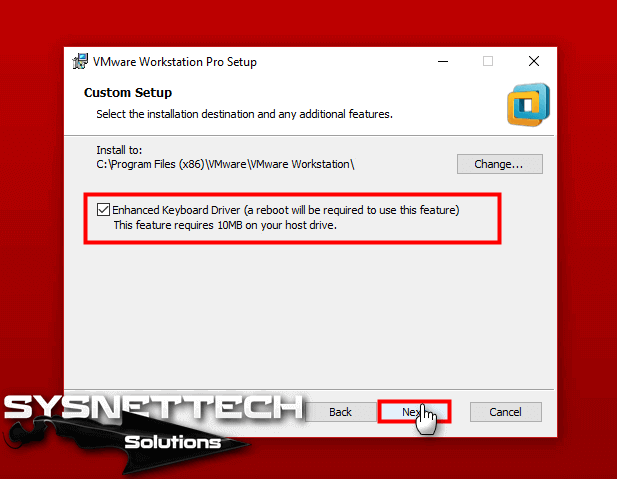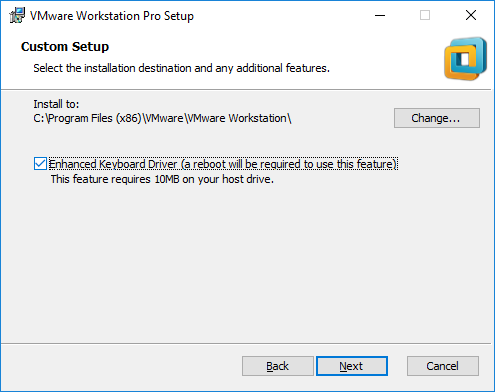

- Vmware workstation enhanced keyboard driver how to#
- Vmware workstation enhanced keyboard driver mac os#
- Vmware workstation enhanced keyboard driver code#
I use "Ctrl" as my VMware Workstation Host hotkey rather than the default of "Ctrl + Alt", because it is much faster to activate. So there will not be guaranteed connectivity between the host and the guest.ħ) Execute a "Host" keystroke between every "Ctrl + #" keystroke

Regardless, this solution will not work for the reasons also described in #3 above: the VMs in question will be on 1) networks that won't be connected to the host via a bridged NIC (with the NIC disabled on the host) and 2) using a VPN without any split tunnel. This solution is questionable in that you have to keep the password of your host machine in plaintext in order to pass it to PSExec. Wade Hatler mentions that he accomplishes this using PSExec to activate the appropriate AutoHotkey script on the host machine in this forum post. I tried adding these strings to my VMX file and they had no effect, so it appears that this functionality may have been depreciated somewhere along the lines between Workstation 5 and 11. However, VMware's documentations states that this is for VMware Workstation 5.0. It seems that in VMware Workstation used to have this kind of functionality built in, as documented in this SuperUser thread. However, after testing with the demo program, it seems that this method does not intercept keystrokes sent to VMware Workstation.
Vmware workstation enhanced keyboard driver how to#
Liuk explains how to use a Windows hook to intercept keystrokes using C++ in this informative post. So there will be no connectivity for either remote desktop or VNC in the first place. Lastly, the VMs will be on 1) networks that won't be connected to the host via a bridged NIC (with the NIC disabled on the host) and 2) using a VPN without any split tunnel. However, VNC has considerable drawbacks when compared to the native VMware Workstation console window: there is no sound, the resolution won't automatically scale, the performance will be bad, and so forth.

On Linux, it is possible to just use VNC. However, one or more of the VMs that I intend to use will be running Linux. One possible solution, if all 3 of the VMs in question were running Windows, would be to use Microsoft's Remote Desktop feature.
Vmware workstation enhanced keyboard driver code#
However, even after copying the exact code and making the necessary string modifications, I can't get it to work with Workstation. This promising post from Nick Sturgess suggests that suspending and that unsuspending AutoHotkey while the VMware window is active will fix the problem. These work to enter the VMs, but not to exit Workstation will feed the "Ctrl + 1" to the VM and AutoHotkey does not take precedence, even if AutoHotkey is run as an administrator. ^3::WinActivate, Win7(3) - VMware Workstation ^2::WinActivate, Win7(2) - VMware Workstation I'm migrating from OS X and want this same functionality.įor reference, here are some potential solutions that I've tried and can verify that they don't work:ĪutoHotkey can be used to make hotkeys like so: ^1::WinActivate, Win7(1) - VMware Workstation
Vmware workstation enhanced keyboard driver mac os#
On Mac OS X, achieving this functionality is trivial with VMware Fusion in combination with Spaces / Mission Control - you can simply put each VM on a separate space and then define whatever space hotkeys you want. I'm using the latest version of VMware Workstation (11.1.0) on Windows 7 圆4 and I want to be able to do a keystroke of "Ctrl + 1" to go to VM #1, "Ctrl + 2" to go to VM #2, and "Ctrl + 3" to go to VM #3.


 0 kommentar(er)
0 kommentar(er)
